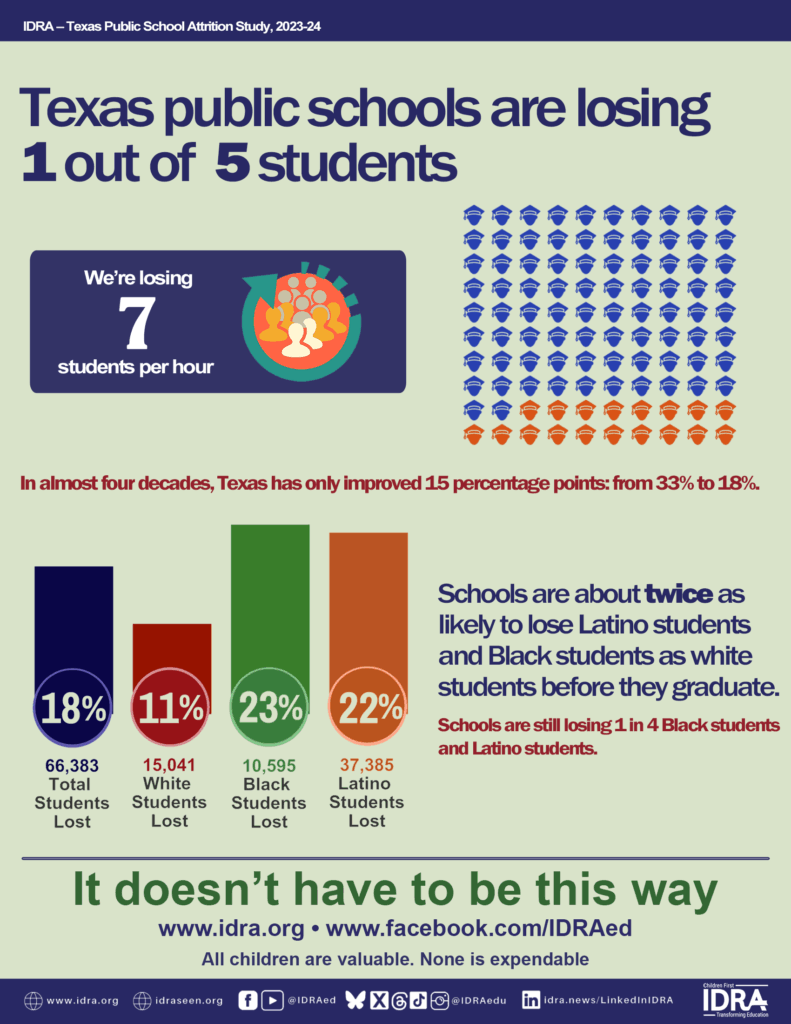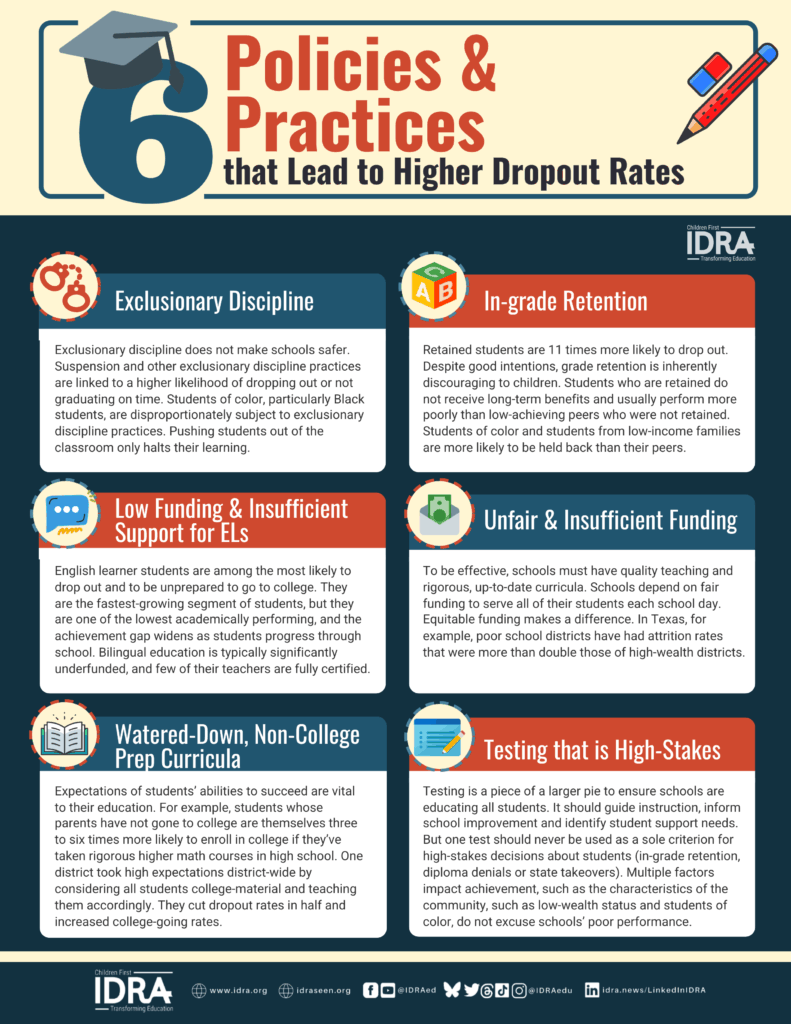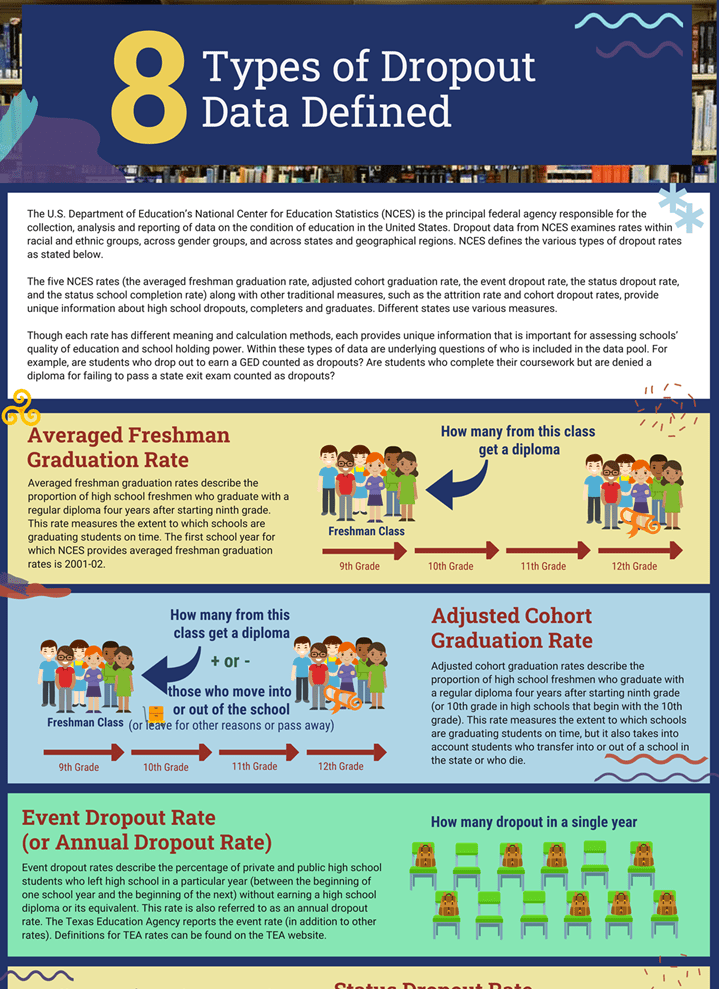IDRA Releases 39th Annual Texas Public School Attrition Study
San Antonio (November 5, 2025) – As schools struggled nationwide with significant attendance issues following the COVID-19 pandemic, Texas high schools saw successes last year, particularly with Latino students. The Texas high school attrition rate declined to the historic low of 18% 2023-24, down from 22% the previous year.
The attrition rate of Latino students also reached an all-time low of 22%, down from 26% the previous year. The rate for Black students also declined from 27% to 23%, which has only been matched two years since IDRA first launched Texas’ first statewide attrition study in 1986.
Still, schools are losing almost one in five students and are twice as likely to lose students of color.
IDRA released detailed findings today from its latest Texas attrition study for 2023-24. The study, led by Christina Quintanilla-Muñoz, M.Ed., & Joanna Sánchez, Ph.D., shows that:
- 18% of the freshman class of 2020-21 left school prior to graduating with a high school diploma. This translates to losing more than seven students per hour.
- Texas public high schools lost a total of 66,383 students from the 2020-21 freshman class by 2023-24.
- Texas public high schools have lost a cumulative total of more than 4.2 million students from their enrollment since 1986.
- For the Class of 2024, Latino students and Black students were approximately two times more likely to leave school without graduating than white students – a consistent trend.
Each fall, IDRA publishes its study of attrition rates, which are an indicator of a school’s holding power, or the ability to keep students enrolled in school and learning until they graduate. IDRA is the only organization to have consistently examined Texas attrition rates for 39 years.
IDRA identifies six school policies and practices that lead to higher dropout rates: exclusionary discipline; in-grade retention; low funding and insufficient support for emergent bilingual students; unfair and insufficient funding; watered-down, non-college prep curricula; and testing that is high-stakes.
“At the most fundamental level, students stay in school and perform better when they feel welcome, safe and secure,” Moreno said.






